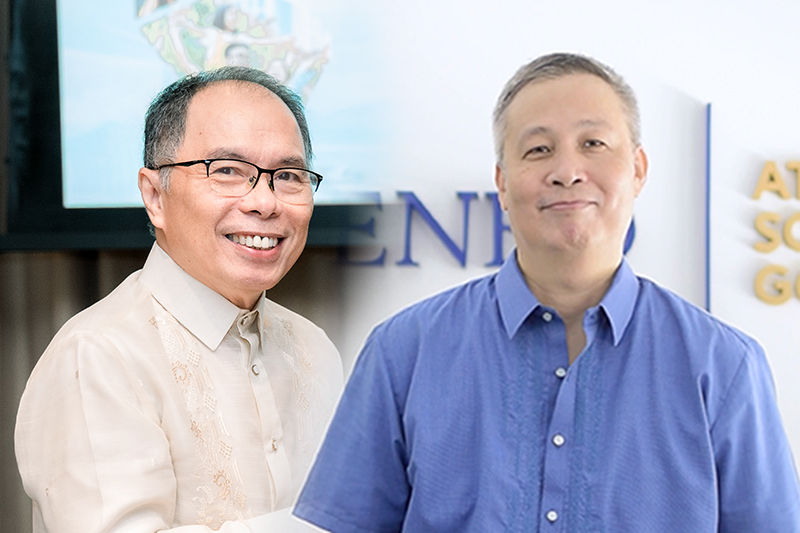Transparency International (TI) has been fighting corruption for 27 years in over 100 countries. Here in the Philippines, I remember their prominent voices such as Randy David, Solita Monsod, Attorney Lilia de Lima, and Judge Dolores Español — all passionate advocates for transparency and accountability, issues that are still very relevant in our society.
Accordingly, TI defines corruption as “the abuse of power for private gain.” By this, corruption has deprived countless citizens around the globe of much-needed public services and benefits of development.
Under the Corruption Perception Index (CPI), corruption indicators pertain to “bribery; the diversion of public funds; the effective prosecution of corruption cases; adequate legal frameworks, access to information; and legal protections to whistleblowers, journalists and investigators.”
But what has corruption caused us?
In September 2018, the United Nations (UN), citing World Economic Forum (WEF) data, expressed that global corruption eats up 5% of the world’s gross domestic product; in November, the World Financial Review stated that Philippines had lost $10 BILLION annually due to illicit financial flows; in December, the UN and the WEF disclosed that $3.6 TRILLION had been lost due to bribes and stolen money; and in December 2019, the WEF published that “corruption, bribery, theft and tax evasion, and other illicit financial flows cost developing countries $1.26 TRILLION a year.”
In the Philippines, an estimated P1.4 TRILLION has been lost to corruption in the years 2017 (P670 BILLION) and 2018 (P752 BILLION), Deputy Ombudsman Cyril Ramos said, where around 20% of the annual government appropriation goes to corruption. Also, according to a study by Carandang and Balboa-Cahig (2020), “some of the more notable typologies and their accompanying corruption cases in the Philippine context are as follows: non-Compliance with the Government Procurement Reform, technical malversation, political dynasty, ghost project, income and asset misdeclaration, red tape, influencing a subordinate to defy order and protocol, bribery, connivance of government officials with drug lords.”
Further, the wide-ranging impact of corruption could result in a myriad of outcomes. In April 2020, the Global Infrastructure Anti-Corruption Center (GIACC) said that corruption may cause
“inadequate infrastructure, dangerous infrastructure, displacement of people, damage to the environment, reduced spending in infrastructure, reduced public expenditure, and reduced foreign investment.”
The said CPI indicators and data culled to substantiate them, and the gargantuan multi-level impact of corruption represent a formidable platform in instigating institutional reforms to achieve bureaucratic coherence and improve the development capacity of the state. With a multi-stakeholder roadmap against corruption, the plans and investments for economic recovery and development in the new normal will not be for naught. In turn, succeeding economic growths could be dispersed effectively.
Specifically, combating corruption in our country instantly augments the chance of helping the following: the 1.3 million people who have perceived themselves as poor in 2019 (self-rated poverty) and the families suffering from hunger (20.9%) during the pandemic, according to an SWS survey; the 16.7% of the population in poverty (Philippine Statistics Authority); and the additional 1.5 million Filipinos pushed into poverty by the pandemic (Philippine Institute for Development Studies).
But the problem of corruption could dangerously be translated into corruption of power. This happens if political opportunism becomes a trend. Rather than harmonize national unity in a pandemic-ravaged country, division and confusion among the population or a particular sector is instead espoused. In turn, false promises and hopes could frustrate the holistic approach being forged by a wide-range of social actors attuned to the long-standing battle against corruption.
More so, corruption of power could be exacerbated whenever the law is weaponized and used to benefit a new or selected few. Empirically, two examples could be cited. First if more than half of Filipinos agree that “It is dangerous to print or broadcast anything critical of the administration, even if it is the truth,” (SWS, July 3-6, 2020 survey), then what we have now is a terrified citizenry.
Second, the latest political charade in “handling” the country’s elite is not really about dismantling the oligarchy as pronounced. What’s happening is a mere changing of the old guards; the overt creation and empowerment of a new oligarchy, the “Dutertegarchs,” as William Pesek has pointedly raised.
To address corruption, political-institutional and economic reforms beg to be independently and holistically crafted and implemented.
Accordingly, TI defines corruption as “the abuse of power for private gain.” By this, corruption has deprived countless citizens around the globe of much-needed public services and benefits of development.
Under the Corruption Perception Index (CPI), corruption indicators pertain to “bribery; the diversion of public funds; the effective prosecution of corruption cases; adequate legal frameworks, access to information; and legal protections to whistleblowers, journalists and investigators.”
But what has corruption caused us?
In September 2018, the United Nations (UN), citing World Economic Forum (WEF) data, expressed that global corruption eats up 5% of the world’s gross domestic product; in November, the World Financial Review stated that Philippines had lost $10 BILLION annually due to illicit financial flows; in December, the UN and the WEF disclosed that $3.6 TRILLION had been lost due to bribes and stolen money; and in December 2019, the WEF published that “corruption, bribery, theft and tax evasion, and other illicit financial flows cost developing countries $1.26 TRILLION a year.”
In the Philippines, an estimated P1.4 TRILLION has been lost to corruption in the years 2017 (P670 BILLION) and 2018 (P752 BILLION), Deputy Ombudsman Cyril Ramos said, where around 20% of the annual government appropriation goes to corruption. Also, according to a study by Carandang and Balboa-Cahig (2020), “some of the more notable typologies and their accompanying corruption cases in the Philippine context are as follows: non-Compliance with the Government Procurement Reform, technical malversation, political dynasty, ghost project, income and asset misdeclaration, red tape, influencing a subordinate to defy order and protocol, bribery, connivance of government officials with drug lords.”
Further, the wide-ranging impact of corruption could result in a myriad of outcomes. In April 2020, the Global Infrastructure Anti-Corruption Center (GIACC) said that corruption may cause
“inadequate infrastructure, dangerous infrastructure, displacement of people, damage to the environment, reduced spending in infrastructure, reduced public expenditure, and reduced foreign investment.”
The said CPI indicators and data culled to substantiate them, and the gargantuan multi-level impact of corruption represent a formidable platform in instigating institutional reforms to achieve bureaucratic coherence and improve the development capacity of the state. With a multi-stakeholder roadmap against corruption, the plans and investments for economic recovery and development in the new normal will not be for naught. In turn, succeeding economic growths could be dispersed effectively.
Specifically, combating corruption in our country instantly augments the chance of helping the following: the 1.3 million people who have perceived themselves as poor in 2019 (self-rated poverty) and the families suffering from hunger (20.9%) during the pandemic, according to an SWS survey; the 16.7% of the population in poverty (Philippine Statistics Authority); and the additional 1.5 million Filipinos pushed into poverty by the pandemic (Philippine Institute for Development Studies).
But the problem of corruption could dangerously be translated into corruption of power. This happens if political opportunism becomes a trend. Rather than harmonize national unity in a pandemic-ravaged country, division and confusion among the population or a particular sector is instead espoused. In turn, false promises and hopes could frustrate the holistic approach being forged by a wide-range of social actors attuned to the long-standing battle against corruption.
More so, corruption of power could be exacerbated whenever the law is weaponized and used to benefit a new or selected few. Empirically, two examples could be cited. First if more than half of Filipinos agree that “It is dangerous to print or broadcast anything critical of the administration, even if it is the truth,” (SWS, July 3-6, 2020 survey), then what we have now is a terrified citizenry.
Second, the latest political charade in “handling” the country’s elite is not really about dismantling the oligarchy as pronounced. What’s happening is a mere changing of the old guards; the overt creation and empowerment of a new oligarchy, the “Dutertegarchs,” as William Pesek has pointedly raised.
To address corruption, political-institutional and economic reforms beg to be independently and holistically crafted and implemented.












